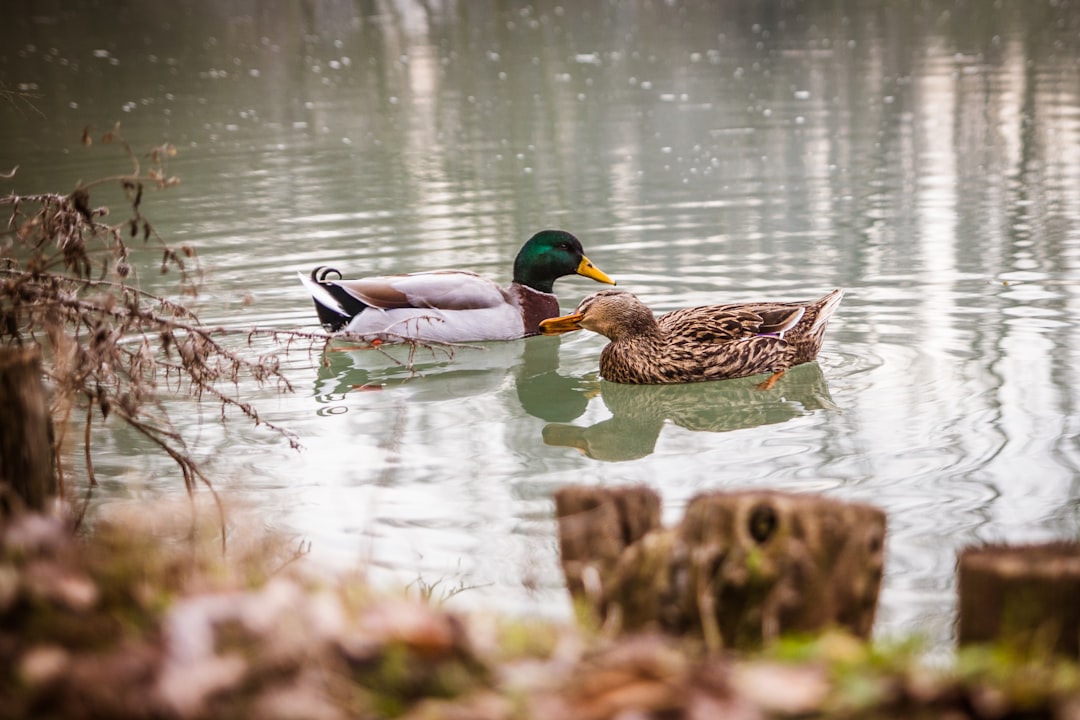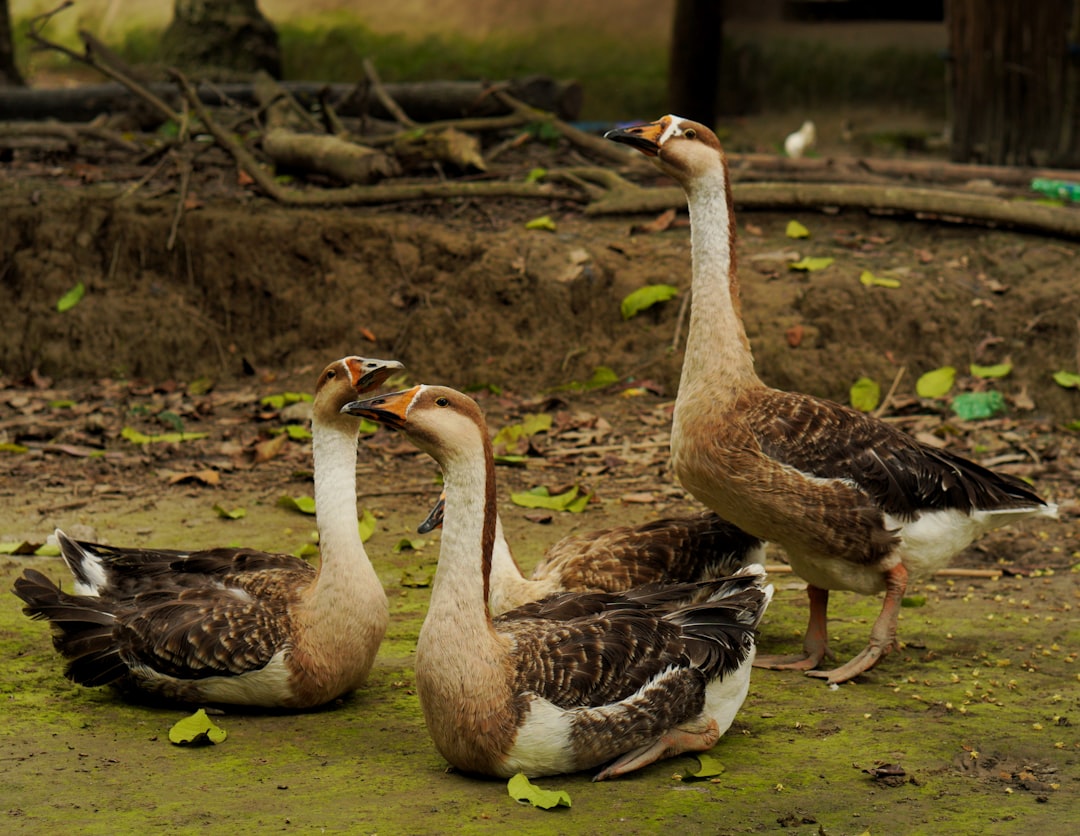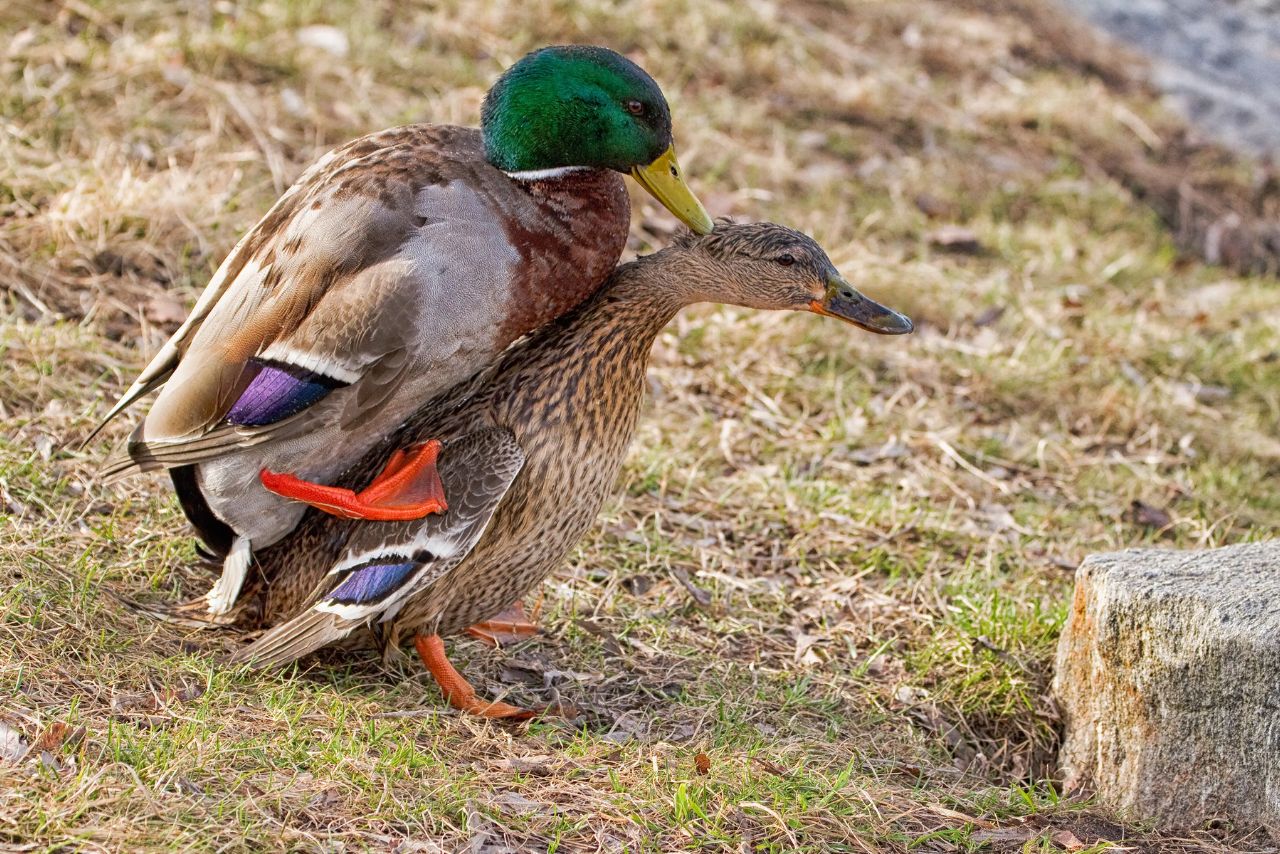No, all ducks not mate for life, rather than mating for life most duck species are known for their “monogamous mating behavior“.
This means (Seasonal bond) that once a male duck, or drake, finds a mate, they will usually stay together for the rest of their lives.
However, not all ducks mate for life. Some species may only stay together for one breeding season before finding new partners the next year.
In this blog post, we will explore this question “Do Ducks Mate For Life?” in detail and provide a comprehensive answer.
One of the most iconic examples of monogamous duck pairing is the mallard duck. Male mallards will often work to attract a female mate with displays of courtship and affection.
Once they have paired up, they will remain together throughout the breeding season and may even return to each other in subsequent years.
It is important to note, however, that not all ducks are monogamous.
Some species, such as the wood duck and the hooded merganser, may engage in polygyny, where a male mates with multiple females.
Other species may even engage in cooperative breeding, where members of a group help raise each other’s offspring.
Some ducks engage in polygyny or cooperative breeding. As such, it is important to recognize the diversity of mating behaviors among different species of ducks.
Importance Of Monogamous Behavior
Monogamous behavior is important in ducks as it helps ensure successful breeding and the survival of offspring.
By staying together for multiple breeding seasons, monogamous pairs can build a strong bond and work as a team to protect their eggs and young from predators.
Additionally, male ducks that engage in courtship displays and show affection towards their mates are more likely to attract a female partner, resulting in higher reproductive success.
Recognizing the different mating behaviors of ducks can also help with conservation efforts for certain species, as understanding their social structures can aid in protecting their habitats and populations.
Understanding Of Duck Mating
By studying duck mating behaviors, researchers can gain a deeper understanding of the evolution and ecology of these fascinating creatures.

For example, studies have shown that ducks may use a variety of cues to select their mates, including physical characteristics, vocalizations, and even odor.
Additionally, research on duck genetics has revealed insights into the genetic basis of traits such as plumage coloration and migratory behavior.
Forced Copulation And Aggression During The Mating Process
It is important to note that not all duck mating behavior is consensual or peaceful.
Some species, such as the mallard and the ruddy duck, have been known to exhibit forced copulation and aggression during the mating process.
In these cases, males may attempt to mate with females even if they are not interested or try to force themselves upon them.
This behavior can lead to physical harm for females and may even impact their ability to successfully reproduce.
Research on these aggressive behaviors has led to efforts to reduce their occurrence in wild populations through habitat management and population regulation.
Ducks Are Seasonal Or Polyamorous Breeders
Some ducks, such as the pintail known as seasonal breeder. This means that they only mate during certain times of the year, typically in the spring when food is abundant and weather conditions are favorable for raising young.
During the off-season, these ducks may form flocks and socialize with other birds.
In contrast, some ducks engage in polyamorous breeding behavior. This means that males will mate with multiple females during a single breeding season.
The ruddy duck is a well-known example of a polyamorous species. Male ruddy ducks will attract multiple female mates and create a “harem” of sorts.
Seasonal Breeders
Seasonal breeding behavior is common among ducks that live in areas with distinct seasonal changes.
When food and resources are abundant, these ducks will mate and raise young.
Once the breeding season is over, they may migrate to other areas or form flocks with other birds for protection.
Polyamorous Breeders
Polyamorous breeding behavior is less common among ducks, but it still exists in some species.
Male ruddy ducks, for example, will attract multiple female mates and create a “harem” of sorts.
This type of behavior often leads to competition between males for access to females, which may result in aggressive displays and fights.
At What Age Can Ducks Start Mating?
The age at which ducks start mating can vary depending on the species. Generally, ducks reach mating maturity between six months and one year of age.

However, some larger species may not reach maturity until they are two or three years old.
In addition to age, other factors such as environmental conditions and availability of resources can also impact when ducks begin to mate.
For example, if food is scarce or there is a high level of competition for mates, ducks may delay breeding until conditions improve.
How Do Ducks Select Their Seasonal Mate?
When ducks are ready to mate, males will often display their vibrant plumage and perform elaborate courtship rituals to attract a mate.
These displays can include head-bobbing, wing-flapping, and vocalizations.
In monogamous species, such as mallards and wood ducks, males will compete for the attention of females.
Once a male has successfully attracted a mate, the pair will remain together for the breeding season. In some cases, these pairs may even reunite in subsequent breeding seasons.
In contrast, polyamorous species like ruddy ducks rely on male competition to secure multiple mates.
The strongest and most dominant males will often attract the most females and establish a harem.
How Many Times A Year Do Ducks Mate?
Most ducks mate once or twice a year, typically during the breeding season.
However, the exact number of times they mate can vary depending on environmental conditions and other factors that may impact their reproductive success.
In some cases, ducks may attempt to mate multiple times within a breeding season if their previous attempts were unsuccessful.
This can occur if there is competition for mates or if resources are scarce.
It’s important to note that breeding frequency is not the only factor that determines reproductive success in ducks.
Other factors like egg production, incubation success, and chick survival rates also play an important role in ensuring healthy populations.
Ducks Mating Cycle:
| Duck Mating Cycle | Timeline |
| Pairing And Breeding | 30 -60 Days |
| Laying And Incubation | 27-38 Days |
| Nurturing The Young | 50-60 Days |
What Happens If A Duck Loses Its Mate?
If a duck loses its mate, it may seek out a new one during the next breeding season.
However, this can be difficult for some species as they often form strong bonds with their mates and may even reunite with them in subsequent breeding seasons.
In monogamous species, losing a mate can also impact the success of future breeding attempts as pairs work together to rear their young.
How Do Ducks Attract Mate?
In order to attract a mate, male ducks display their vibrant plumage and perform elaborate courtship rituals.
These displays differ among species. For example, male mallards will shake their heads vigorously from side to side or whistle while raising their tail feathers.
On the other hand, male wood ducks will bob their head and emit a series of scratchy calls.
Additionally, some species like the Northern Pintail engage in synchronized swimming as part of their courtship display, while others like the Bufflehead perform aerial acrobatics.
Once a female has been attracted to a male’s display, the pair may engage in preening each other’s feathers or feeding one another during courtship.
This behavior helps strengthen the bond between them and ensures successful breeding.
How Long Are Ducks Pregnant?
Ducks do not have a pregnancy period like mammals. Instead, female ducks lay eggs after mating.
The number of eggs laid can vary depending on the species, with some laying as few as four while others can lay up to twelve or more.
The incubation period for duck eggs typically lasts around 28 days, during which time the female will stay on or near the nest to protect and care for the eggs.
Once the eggs hatch, the female will lead her offspring to water where they can begin feeding and learning important survival skills.
Good “Love Nest”
Unlike humans, ducks do not have a pregnancy period. Female ducks lay eggs after mating with a male duck.
During the breeding season, female ducks can lay up to 12-15 eggs which they incubate for around 28 days before hatching.
It is interesting to note that some species of ducks like the Mandarin Duck and the Wood Duck are known for their elaborate nesting habits.
They build their nests in tree cavities or holes, which can be as high as 30 feet from the ground.
How Many Ducklings Do Ducks Have?

Female ducks can lay up to 12-15 eggs which they incubate for around 28 days before hatching.
Once the ducklings hatch, they are able to leave the nest within a day and follow their mother in search of food and water.
The number of ducklings a female duck has can vary depending on the species and environmental conditions.
For example, mallards typically have 8-13 ducklings per brood, while wood ducks have smaller broods of 6-9 ducklings.
Conclusion: Do Ducks Mate For Life?
While ducks do not mate for life, they can form strong bonds with their mates during the breeding season.
By studying their behaviors and ecological needs, we can gain insights into their social structures and promote effective conservation measures.
As responsible stewards of the environment, it is our duty to protect all species including ducks for future generations.
Protecting duck habitats and managing populations through responsible hunting practices are some ways to help ensure that these amazing birds continue to thrive in our ecosystems.
It is also important to understand their reproductive biology such as how many ducklings a female duck can have and whether or not ducks can lay eggs without mating.
FAQs
Do ducks mate for life?
No, ducks do not mate for life.
How long do ducks stay together?
Ducks usually stay together until the end of the breeding season, which can last from a few weeks to a few months.
Do ducks form strong bonds with their mates?
Yes, ducks can form strong bonds with their mates during the breeding season.
Do male and female ducks share parenting responsibilities?
While female ducks are responsible for incubating the eggs, male ducks play an important role in protecting and defending the nest from predators during the breeding season.
How can we help protect duck populations?
We can help protect duck populations by protecting their habitats and managing wild populations responsibly, as well as promoting conservation efforts.




